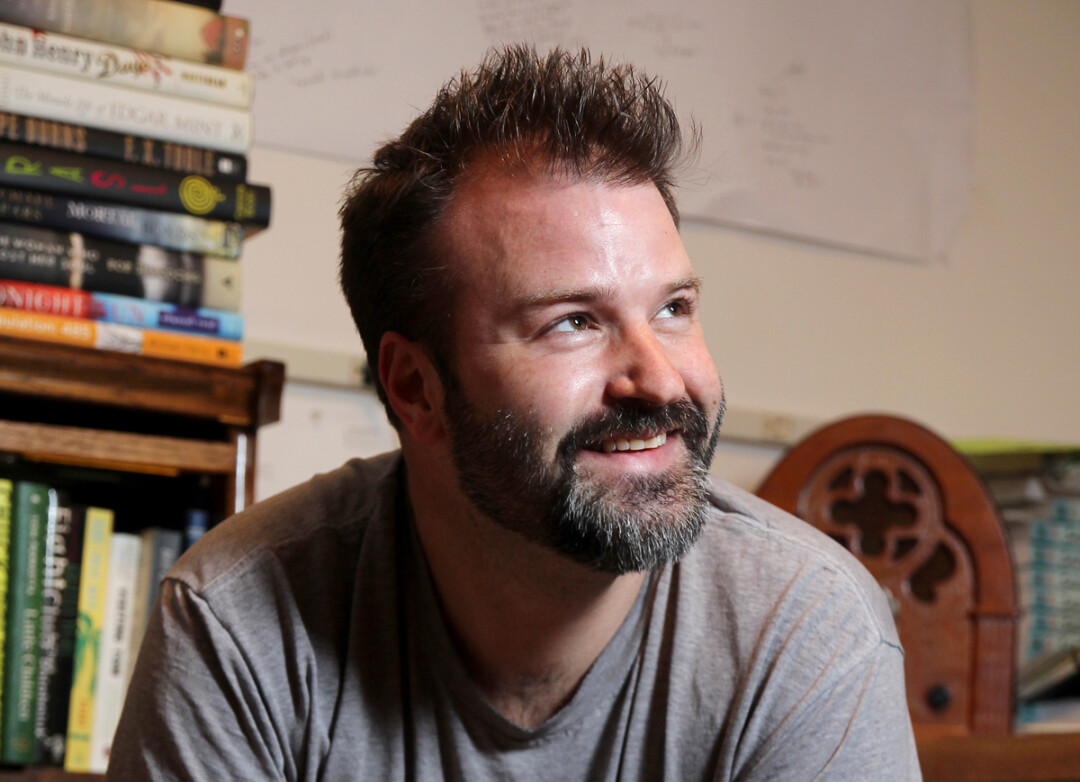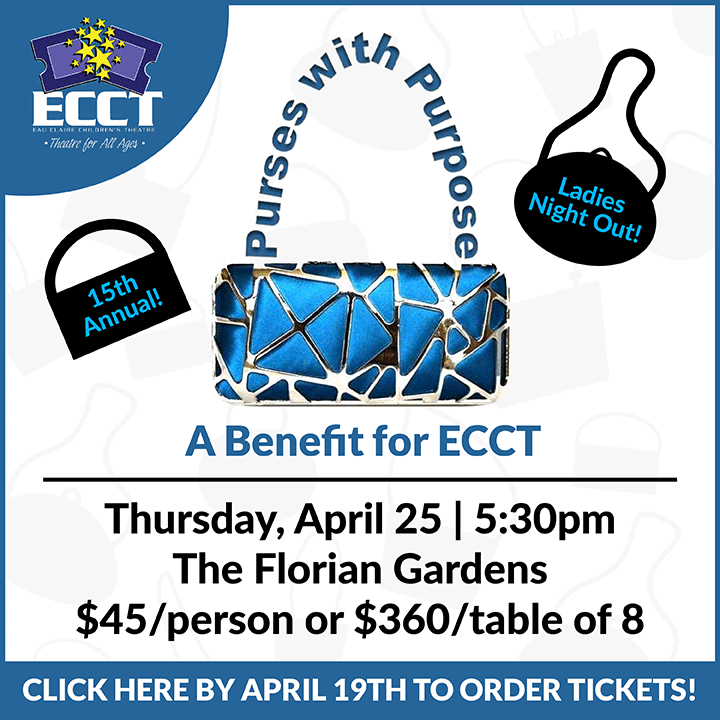Nickolas Butler: Familiar Landscapes
Butler explores light and dark sides of Midwest in short-story collection
Eric Rasmussen, photos by Andrea Paulseth |

the best-selling novel Shotgun Lovesongs.
There is an Upper Midwest narrative that started somewhere around Little House in the Big Woods and strings together generations of writing, from Aldo Leopold up through some of the Chippewa Valley’s most successful modern artists, such as Michael Perry and Justin Vernon. In it, the land is its own character, equal parts benevolent provider and outright antagonist. The people in these stories know their places and accept their burdens with quiet resolve. Spring follows winter, but winter always returns again. After living such a story, it may sound cliché, but its tone and outlook is unique, and it is finding a fresh audience all over the country, even the world.
“When I think about writing a novel, I don’t want to carry on a level of darkness for 300 pages. I think you can get away with that with a short story. You can plunge people into some pretty dark territory because it’s only going to last for 20 to 30 pages.”
– Nickolas Butler, on the morbid turns in his new short-story collection, Beneath the Bonfire
Nickolas Butler has become the literary champion of the Wisconsin story. If you have not yet had the chance to read his debut novel, Shotgun Lovesongs, you are missing out on one of the most critically and commercially successful stories of life in the fields and forests of Wisconsin. The book earned international awards, sales honors like inclusion on Target’s Book Club list, and a movie version is still in the works. Butler says of this past year, “Being in France to promote the book was a highlight. Winning the Great Lakes Great Reads and the Midwest Independent Booksellers Awards was a highlight. We were in London with my publisher on our wedding anniversary. It’s been a crazy, busy, but wonderful year.” The life of a touring author can be glamorous, like when he packs a theater at Memorial High School for the Chippewa Valley Book Festival and then flies off to Europe. And sometimes it can be a little more humbling. “I was in Cincinnati when they had record cold,” he said. “I averaged two and a half warm bodies per reading. Sometimes you go to a reading and there’s three homeless people.”
Now Butler’s second book is nearing its release date, and Beneath the Bonfire accomplishes everything a good sophomore effort should. First of all, it is different. Beneath the Bonfire is a collection of short stories, which allows Butler more freedom over the course of the whole book to make a point, while at the same time challenging his storytelling skills within the confines of a couple of dozen pages per tale. But, second, it is not too different. The landscape is the same as Shotgun Lovesongs, even if the specific settings are a hundred miles south or west of the fictional town of Little Wing, and the people are the same type of folks as Henry, Beth, and the other characters from the novel. Third, Beneath the Bonfire shows Butler’s evolution as an artist. He does not just harvest another bunch of stories from the Wisconsin countryside. He plants headlining-grabbing events from the past decade, like the Gulf oil spill and Michael Vick’s dogfighting, in the local soil and explores what comes up. He focuses on some of the more sinister themes that pepper the countryside, but always balances them with aww-shucks moments of Midwestern sunshine, too.
 The stories that make up this collection were actually written before Shotgun Lovesongs, which complicates the evolution-of-the-artist idea a little. Butler attended the Iowa Writers’ Workshop, a prestigious master’s program at the University of Iowa, and most of Beneath the Bonfire was produced during his time there. Several of the stories have already been published or won awards in short story journals. “I was really worried about that,” says Butler of returning to older works. “That was some time ago. Am I going to like these or not? But having a chance to go back into the manuscript and edit them, I’m really proud of what I did.” After that editing and revising, the works now represent the next step in a blossoming literary career.
The stories that make up this collection were actually written before Shotgun Lovesongs, which complicates the evolution-of-the-artist idea a little. Butler attended the Iowa Writers’ Workshop, a prestigious master’s program at the University of Iowa, and most of Beneath the Bonfire was produced during his time there. Several of the stories have already been published or won awards in short story journals. “I was really worried about that,” says Butler of returning to older works. “That was some time ago. Am I going to like these or not? But having a chance to go back into the manuscript and edit them, I’m really proud of what I did.” After that editing and revising, the works now represent the next step in a blossoming literary career.
Butler’s favorite of the collection, which is arguably the best story of the bunch, is the perfect place to start the book and the perfect representation of everything Beneath the Bonfire has to offer. “The Chainsaw Soiree” tells the story of a gathering, a community coming together to cut firewood for the central figures of the group, a couple that the main character used to be close to. Like so many stories in the book, the dim environment yields to an even darker twist. In this instance, Butler conjures images from a nightmare circus to augment an unexpected betrayal. In other stories, violence jumps out of the darkness or hides in remote cabins and farms isolated by hills and long driveways. Stories like “Morels” and “Sweet Light Crude” provide the landscape promised by that Wisconsin narrative, the driftless region in southwest Wisconsin and a wilderness cabin in Minnesota, respectively. Then, the wheels come off. Butler explains his more morbid turn as a function of the genre. “When I think about writing a novel, I don’t want to carry on a level of darkness for 300 pages. I think you can get away with that with a short story. You can plunge people into some pretty dark territory because it’s only going to last for 20 to 30 pages.” Other selections are much gentler. “Apples,” a story inspired by Butler’s father-in-law, and “Train People Move Slow,” a story that adds a hopeful angle to Butler’s most common theme of ending relationships, find moments of sweetness to bring depth to the book.
Every artist is influenced by the place in which he or she lives. Sometimes those influences are subtle and uncovered only by English majors in their literature classes. Other times, the artists are more like Nickolas Butler. He lives outside of Eau Claire in the same hills that frame his stories. His next work, another novel, features a multi-generational story of fathers and sons, change and divorce, which is set in a Boy Scout camp modeled after Camp Phillips near Haugen. That area features Wisconsin’s unique variety of trees and lakes, winter and summer, and small-town folks enduring the struggles of modern life. From here it looks pretty familiar, but through the words of the Chippewa Valley’s newest and most notorious author, it is a story worth reading.
Butler will read from his book at 7pm Thursday, May 7, at The Volume One Gallery at The Local Store, 205 N. Dewey St. He will be joined by Eau Claire native Nicholas Gulig for a reading from Gulig’s new book of poetry, North of Order. Beneath the Bonfire will be released May 5 by Thomas Dunne books. It will be available at The Local Store as well as nationwide and online.




















